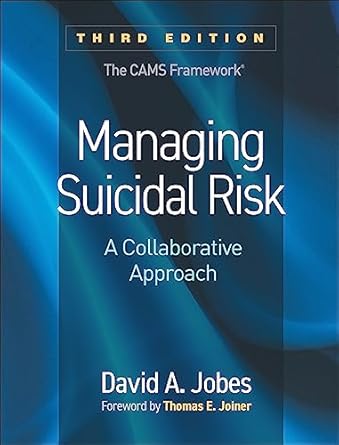Suicide Prevention

Contact the 988 National Suicide & Crisis Lifeline if you need to talk to someone. Dial 911 if you have an emergency.
Suicide is not inevitable for anyone. By starting the conversation, providing support, and directing help to those who need it, we can prevent suicides and save lives.
Know the Risk Factors
Risk factors are characteristics that make it more likely that someone will consider, attempt, or die by suicide. They can't cause or predict a suicide attempt, but they're important to be aware of.
- Mental disorders, particularly mood disorders, schizophrenia, anxiety disorders, and certain personality disorders
- Alcohol and other substance use disorders
- Hopelessness
- Impulsive and/or aggressive tendencies
- History of trauma or abuse
- Major physical illnesses
- Previous suicide attempt(s)
- Family history of suicide
- Job or financial loss
- Loss of relationship(s)
- Easy access to lethal means
- Local clusters of suicide
- Lack of social support and sense of isolation
- Stigma associated with asking for help
- Lack of healthcare, especially mental health and substance abuse treatment
- Cultural and religious beliefs, such as the belief that suicide is a noble resolution of a personal dilemma
- Exposure to others who have died by suicide (in real life or via the media and Internet)
Know the Warning Signs
Some warning signs may help you determine if a loved one is at risk for suicide, especially if the behavior is new, has increased, or seems related to a painful event, loss, or change. If you or someone you know exhibits any of these, seek help by calling 988.
- Talking about wanting to die or wanting to kill themselves
- Talking about feeling empty or hopeless or having no reason to live
- Talking about feeling trapped or feeling that there are no solutions
- Feeling unbearable emotional or physical pain
- Talking about being a burden to others
- Withdrawing from family and friends
- Giving away important possessions
- Saying goodbye to friends and family
- Putting affairs in order, such as making a will
- Taking great risks that could lead to death, such as driving extremely fast
- Talking or thinking about death often
Other serious warning signs that someone may be at risk for attempting suicide include:
- Displaying extreme mood swings, suddenly changing from very sad to very calm or happy
- Making a plan or looking for ways to kill themselves, such as searching for lethal methods online, stockpiling pills, or buying a gun
- Talking about feeling great guilt or shame
- Using alcohol or drugs more often
- Acting anxious or agitated
- Changing eating or sleeping habits
- Showing rage or talking about seeking revenge
From Our Collection
5 Action Steps
Here are 5 action steps you can take to help someone who is in emotional pain:
1. ASK: “Are you thinking about killing yourself?” It’s not an easy question but studies show that asking at-risk individuals if they are suicidal does not increase suicides or suicidal thoughts.
2. KEEP THEM SAFE: Reducing a suicidal person’s access to highly lethal items or places is an important part of suicide prevention. While this is not always easy, asking if the at-risk person has a plan and removing or disabling the lethal means can make a difference.
3. BE THERE: Listen carefully and learn what the individual is thinking and feeling. Research suggests acknowledging and talking about suicide may in fact reduce rather than increase suicidal thoughts.
4. HELP THEM CONNECT: Save the 988 Suicide & Crisis Lifeline number (call or text 988) and the Crisis Text Line number (741741) in your phone so they’re there if you need them. You can also help make a connection with a trusted individual like a family member, friend, spiritual advisor, or mental health professional.
5. STAY CONNECTED: Staying in touch after a crisis or after being discharged from care can make a difference. Studies have shown the number of suicide deaths goes down when someone follows up with the at-risk person.
Sources: 988 Suicide & Crisis Lifeline, National Institute on Mental Health.
Research & Data
- CDC Data Sources on Suicide
This page contains data sources for injury prevention including WISQARS, along with other sources from CDC, federal agencies, and non-federal agencies
- CT 211 Counts
Data for Connecticut 211 calls listed by category - including Healthcare, Mental Health and Addictions, Housing & Shelter, and more.
- PubMed
PubMed comprises more than 20 million citations for biomedical literature from MEDLINE, life science journals, and online books. Citations may include links to full-text content from PubMed Central and publisher websites.
- SAMHSA Data
Find data and reports on mental health, substance use treatment, and drug use from sources that include: the National Survey on Drug Use and Health (NSDUH), Treatment Episode Data Set (TEDS), National Survey of Substance Abuse Treatment Services (N-SSATS), National Mental Health Services Survey (NMHSS), and more.
- State Lifeline Reports
These reports examine call volume and answer rate for each state to the 988 Lifeline Network Crisis Centers.
- Suicide and Self-Harm Injury
This page from the National Center for Health Statistics briefly provides data on suicide, including firearms suicides, suffocation suicides, poisoning suicides.
- Suicide Facts and Statistics - American Association of Suicidology
Includes rates, numbers, and ranking of each state; male/female statistics; age-specific statistics; and regional statistics.
- Suicide Statistics (Connecticut) - Office of the Chief Medical Examiner
Suicide statistics in Connecticut by age, gender, and year.
- The Connecticut School Health Survey
- WISQARS (Web-based Injury Statistics Query and Reporting System)
WISQARS is an interactive database system that provides customized reports of injury-related data.
Self-Help Groups
Apps
Safety Plan
 An app for anyone who has experienced thoughts about suicide or self-harm. The app helps you make a safety plan, share your safety plan with loved ones, and use tools to manage distress. Learn more on the VA website.
An app for anyone who has experienced thoughts about suicide or self-harm. The app helps you make a safety plan, share your safety plan with loved ones, and use tools to manage distress. Learn more on the VA website.Spiral Up
A free neuroscience-based app that helps you process emotions and release stress in minutes.
Learn MoreSuicide Safe
A free mobile app that helps providers integrate suicide prevention strategies into their practice and address suicide risk among their patients. Learn more on the SAMHSA website.
Videos
Podcasts
Social Work Talks: Supporting People Grieving After Losing a Loved One to Suicide (NASW) - Speaking of Psychology: Suicide Prevention, with Jill Harkavy-Friedman, PhD
Trainings
- Adolescent Suicide Prevention (CAMS Care)
- Lessons from the Field: Suicide Prevention: Building Protective Factors to Keep Students Safe (National Center on Safe Supportive Learning Environments)
- Postvention and Healing After a Patient Suicide (Yale)
- Suicide Risk Management Webinar Series (VA)
VA S.A.V.E Suicide Prevention Training




